Want to invest in dividend stocks in Canada but don’t want the hassle of managing a portfolio?
Dividend ETFs can be a great hands-off approach to receive regular income and diversify your holdings at a low cost.
Dividends can be a huge portfolio booster. Between 1930 and 2021, dividends contributed roughly 40% towards the total return of the S&P 500 Index.
Below is our list of the best dividend ETFs in Canada.
Are Dividend ETFs Worth the Fees?
For the right investor, dividend-focused ETFs are worth the MERs that they charge for several reasons.
Like most ETFs on the list below, dividend-focused strategies usually have at least 50 underlying stock holdings. The number of stock holdings can increase to several hundred in some cases, which provides an even higher level of diversification. Choosing and monitoring even 50 dividend stocks is a difficult task for most investors.
Dividend reinvestment plans (DRIPs) are also another great feature of most dividend ETFs. This allows you to automatically reinvest any received dividends back into the ETF once they are paid out. For a self-picked stock portfolio, you are left with making the decision several times a year for each stock.
Dividend ETFs are often structured to enhance tax efficiency, which reduces capital gains compared to traditional mutual funds.
ETFs can provide specialized exposure, enabling investors to target specific sectors, regions, or themes with precision.
Constructing a well-built portfolio will require you to invest globally in most cases. Doing stock research on dividend-paying companies in different countries can be a very difficult task for most investors. Building a well-diversified portfolio from a geographical perspective is easy through dividend ETFs.
If you’re a hands-off investor looking for an easy way to diversify your investments at a low fee and earn income, dividend ETFs could be the perfect fit for you.
Downsides of Dividend ETFs
While dividend ETFs can be attractive for their income potential and diversification benefits, they also come with some downsides:
- Expense Ratios: Even if they’re relatively low, the fees associated with dividend ETFs can eat into returns over time, especially when compared to owning individual stocks with no ongoing management fees.
- Interest Rate Sensitivity: Dividend ETFs can be sensitive to changes in interest rates. When rates rise, dividend-paying stocks might become less attractive relative to bonds, leading to potential price declines.
- Lack of Capital Appreciation: While dividend ETFs focus on income, they might not always prioritize capital appreciation. This could result in missed growth opportunities compared to broader market ETFs.
- Dividend Sustainability: Not all dividends are sustainable. If an ETF is chasing high yields without considering the sustainability of those dividends, there’s a risk of dividend cuts which can negatively impact the ETF’s price.
- Potential for “Yield Traps”: Some stocks have high yields because their prices have fallen due to business challenges. An ETF focused solely on high yields might inadvertently invest in these “yield traps,” risking capital depreciation.
Key Features to Consider For Dividend ETFs
Here are some of the primary factors to evaluate before choosing your dividend ETF:
- Yield: The yield is the annual dividend income an investor receives, expressed as a percentage of the ETF’s price.
- Management Expense Ratio (MER): MER contributes significantly to the total cost of holding an ETF. Try to choose ETFs with lower MERs, as this can save you money and potentially enhance your overall returns.
- Size and Liquidity: Larger ETFs often provide better liquidity, allowing easier trading at a lower cost. Evaluate the assets under management and the average daily trading volume of the ETF you want to purchase.
- High-yield vs. Dividend Growth: High-yield ETFs typically deliver higher income, while dividend growth ETFs focus on companies with the potential for consistent dividend increases.
- Risk Rating: Assess the risk rating of the ETF to ensure it aligns with your investment goals and risk tolerance. Lower-risk ETFs might provide more stability but limit return potential compared to higher-risk funds.
- Distribution Frequency: Take note of the ETF’s distribution frequency, which can be monthly, quarterly, semi-annually, or annually. Determine which payout schedule best suits your income needs.
By considering these key features, you can select a dividend ETF in Canada that best aligns with your investment objectives and preferences while striving for a strong, income-generating portfolio.
Best Dividend ETFs in Canada
- iShares Canadian Financial Monthly Income ETF (FIE.TO)
- iShares S&P/TSX Composite High Dividend Index ETF (XEI.TO)
- iShares Core MSCI Canadian Quality Dividend Index ETF (XDIV.TO)
- iShares Canadian Select Dividend Index ETF (XDV.TO)
- BMO Monthly Income ETF (ZMI.TO)
- BMO Canadian Dividend ETF (ZDV.TO)
- RBC Canadian Bank Yield Index ETF (RBNK.TO)
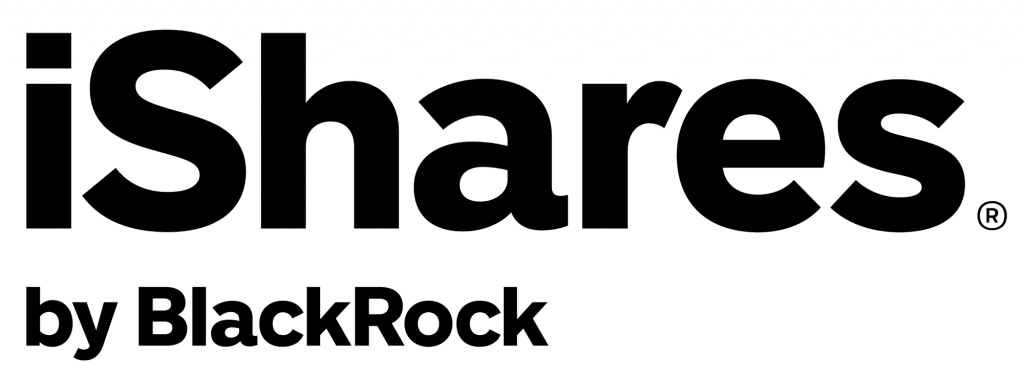
- Ticker: FIE.TO
- Distribution Yield: 6.98%
- Assets Under Management: 962.25 M
- Management Expense Ratio: 0.85%
- Stock Price: $6.84
- YTD Return: 1.81%
The iShares Canadian Financial is a 70-30 mix of other common shares and other ETFs. Roughly 70% is made up of common shares, mostly in banks, insurance, and other financial companies.
The remaining 30% is divided into two ETFs – one of which is made up of preferred shares of 176 Canadian companies (20% weight of the original ETF), and the other is corporate bonds (10% weight).
This breakdown allows the ETF to offer a distribution yield much higher than comparable financial ETFs are offering right now – over 7% at the time of writing this (Nov 2023). It also offsets the inherent volatility of common shares and reduces the risk associated with exposure to a single sector.
With a Management Expense Ratio (MER) of 0.85%, the ETF is expensive, but the cost is justified due to its high yield and modest capital appreciation potential.
The fund has a medium risk rating despite offering exposure to a single sector and offers monthly distributions. The net assets under management are over $892 million, and the number of underlying holdings is massive – over 1,200, giving it a significant diversification edge.
Considering its past performance and current yield, it’s one of the best ETFs Canadians can invest in, and not just for the dividends.
Through the preferred share mix it allows Canadian investors to generate a solid monthly income from the financial sector at a level that would be nearly impossible to recreate by investing directly in the financial sector stocks, even if you are willing to take on a substantial amount of risk.

- Ticker: XEI.TO
- Distribution Yield: 5.08%
- Assets Under Management: 1.55 B
- Management Expense Ratio: 0.22%
- Stock Price: $23.86
- YTD Return: 0.02%
This ETF follows the performance of the S&P/TSX Composite High Dividend Index that’s rebalanced on a quarterly basis and offers you exposure to 74 Canadian dividend payers.
Thanks to the natural distribution of high-quality dividend payers in Canada, the holdings lean heavily towards energy and finance, with the two sectors making up over 60% of the total weight.
The top ten holdings include two telecom giants, three banks, four energy companies, and Fortis, all of which are established aristocrats, so even though the index is not exclusively aristocratic, they make up the bulk of its weight.
The index offers a healthy enough distribution yield – around 5.7% at the time of writing this, and the capital appreciation potential is quite decent and, to an extent, mimics the performance of the overall Canadian market (S&P/TSX).
It’s a low-cost ETF with MER at just 0.22% or $2.2 per $1,000 of income the fund generates for you. The diversification has led to an attractive medium-risk rating.
Thanks to its focus on high-yield giants from various industries, it’s a solid ETF for dividends, but you should take its over-exposure to the energy and financial sector.
If both sectors go bearish at once, it may erode your capital tied to this ETF at an alarming rate. However, the risks of its payouts being slashed are relatively minimal.

- Ticker: XDIV.TO
- Distribution Yield: 4.42%
- Assets Under Management: 926.47M
- Management Expense Ratio: 0.11%
- Stock Price: $25.03
- YTD Return: 0.66%
If you are looking for a more financially leaning but still adequately diversified ETF, this might be the right pick for you. It tracks the Core MSCI Canadian Quality Dividend Index, made up of just 18 holdings.
Financial sector companies are over-represented, making up close to 50% of the weight of the fund. Energy, utilities, and telecom cover the remaining, with around five percent remaining for other sectors and cash.
However, its top holdings include some of the most trusted dividend stocks in Canada, including Fortis, Manulife, three banks, and Telus. So, even with a limited number of holdings and a heavy lean on the financial industry, the ETF cannot be classified as under-diversified.
It offers a yield relatively similar to the above-discussed XEI ETF (with a distribution yield of around 5%), but the growth potential is significantly better, at least considering the performance in the last five years.
It’s also very cost-effective, with an MER of just 0.11%, so you would pay around $1.1 a year for every $1,000 you get from this ETF.
The only chink in this ETF’s armour is that it leans too heavily towards the financial sector, but there is adequate diversification among its financial holdings, and the performance, yield, and MER combo make it a compelling pick if you are looking for dividend ETFs.

- Ticker: XDV.TO
- Distribution Yield: 4.62%
- Assets Under Management: 1.64B
- Management Expense Ratio: 0.55%
- Stock Price: $26.7
- YTD Return: 0.11%
Calling this ETF a slightly more powerful version of the iShares Core MSCI Canadian Quality Dividend Index ETF (discussed above) wouldn’t be a mischaracterization.
It’s a more expensive version offering a slightly higher yield and a more powerful growth potential (and more diversification).
The fund is made up of 30 holdings, most of which are dividend aristocrats, though not all. Over half of the index (by weight) is made up of financial sector holdings, followed by utilities and telecom.
The energy sector only makes up about 8% of the weight, which is one of the things that differentiate this ETF from whole-market ETFs or ETFs that expose you to the dividend-heavy weights of the market.
At the time of writing this, the ETF is offering a mid-5 % yield, and if you had reinvested the dividends, the ETF would have grown your $5,000 investment to around $6,700 by now (Nov 2023). It comes with a relatively higher MER of 0.55% and a medium risk rating.
If you are cost-sensitive, the ETF may look far more expensive compared to most others on this list, but it’s important to analyze this cost from the context of its return potential, where it excels.
5. BMO Monthly Income ETF
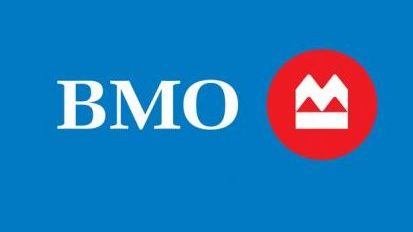
- Ticker: ZMI.TO
- Distribution Yield: 5.10%
- Assets Under Management: 106.07M
- Management Expense Ratio: 0.20%
- Stock Price: $16.08
- YTD Return: 0.91%
After so many BlackRock ETFs, a BMO ETF offers a nice change of pace. It’s a small, low-cost ETF.
There are just around $102 million in Assets Under Management (AUM), and the MER is at 0.2%. It’s also lower risk than most other ETFs on this list, with the risk classification at low-to-medium (Two on a one-to-five scale).
What makes it even more different from others on this list is that it’s an ETF made up of other ETFs, nine of them to be exact. All of them are BMO ETFs, and one of them is a covered call ETF, which makes up about 15% of the total weight.
It’s quite well diversified, not just from the perspective of the underlying companies (and their sectors and industries) but also from a geography and asset class perspective.
Companies from the US and Canada represent about 70% of the weight, with the rest coming from other regions. Over one-third of the ETF is made up of bonds.
However, this hasn’t necessarily weighed the ETF down, performance-wise, and it has resulted in a decent distribution yield – 5.5% at the time of writing this. The distributions are monthly.
Even if covered call ETFs are not your cup of tea, this ETF is worth considering. The volatility and risk that covered call ETFs add might be offset by the corporate bonds held in one of the underlying ETFs.
6. BMO Canadian Dividend ETF
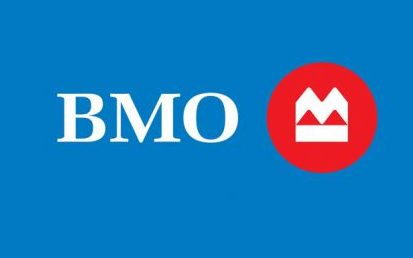
- Ticker: ZDV.TO
- Distribution Yield: 4.39%
- Assets Under Management: 1.03B
- Management Expense Ratio: 0.35%
- Stock Price: $18.99
- YTD Return: -0.21%
BMO Canadian Dividend ETF is made up of 52 holdings, with financial and energy companies making up about 60% of the sector’s weight, though the financial sector is overrepresented, which is a common theme in Canadian dividend ETFs. The top ten holdings include four banks, two telecoms, and two energy giants.
It’s a pure-play Canadian ETF with all 52 companies hailing from Canada. Still, the sector-wide diversification is enough to get it a medium-risk rating. The MER is a bit on the high side at 0.39%.
The ETF makes monthly distributions. Its performance has been quite decent in the last ten years, and at the time of writing this, the ETF is offering distributions at a yield of about 4.7%.
It wouldn’t be a stretch to consider this ETF a slightly different version of BlackRock’s XDV, but it has a higher number of holdings and is better diversified. Over the last ten years, its performance has been slightly better, but if you are focused more on the yield, XDV would be a better pick.
7. RBC Canadian Bank Yield Index ETF
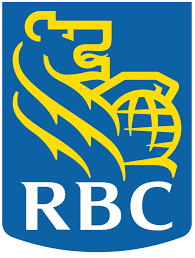
- Ticker: RBNK.TO
- Distribution Yield: 4.81%
- Assets Under Management: 259.3M
- Management Expense Ratio: 0.32%
- Stock Price: $22.97
- YTD Return: -2.37%
This RBC Canadian Bank Yield Index ETF aims to track the performance of the Solactive Canada Bank Yield Index. The two main guiding principles of this ETF are: focus on Canadian banks and leaning towards high-yield banks.
So, the fund is made up of just the big six Canadian banks and has about $227 worth of assets under management. However, the banks are disproportionately represented.
Currently, CIBC and Bank of Nova Scotia, the two highest-yielding Canadian banks, make up about 50% of the index, while Royal Bank and National Bank of Canada, the best growers in the sector, make up less than 17% combined.
So, if you want a more dividend-oriented exposure to Canadian banks, this is the ETF for you. It’s offering a distribution yield of about 5.8% at the time of writing this. The growth potential is not bad per se, but it could have been significantly better with an equal weight distribution exposure to the banks.
It’s a relatively low-cost ETF, with an MER of 0.32%, so if you make $1,000 in a year, only about $3.2 would go towards the fees. However, it carries a medium to high risk rating since it exposes you to a handful of constituents from a single industry.
Canadian banks have a solid history when it comes to dividends and financial stability, even in weak markets, and this ETF offers you sector-wide exposure to their dividends.
Frequently Asked Questions
What are the best options for U.S. dividend ETFs available in Canada?
Some good options to consider include the Vanguard U.S. Dividend Appreciation Index ETF (VGG), and the iShares U.S. High Dividend Equity Index ETF (XHU). These ETFs track U.S. companies with solid dividend track records.
Which Canadian dividend Aristocrats ETFs are popular among investors?
A popular ETF in this category is the iShares S&P/TSX Canadian Dividend Aristocrats Index ETF (CDZ). This ETF provides exposure to a diversified group of Canadian companies with long-term dividend growth.
What are the top-performing international dividend ETFs for Canadians?
A popular international dividend ETF choice for Canadians is the Vanguard FTSE All-World ex Canada High Dividend Yield Index ETF (VI). This ETFs offer exposure to global equity markets with a focus on dividend-paying companies.
How to Buy the Best Dividend ETFs in Canada
The cheapest way to buy ETFs is from discount brokers. My top choices in Canada are:
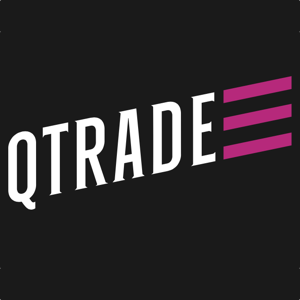
- 105 commission-free ETFs to buy and sell
- Excellent customer service
- Top-notch market research tools
- Easy-to-use and stable platform

- Stock and ETF buys and sells have $0 trading fees
- Desktop and mobile trading
- Reputable fintech company
- Fractional shares available
To learn more, check out my full breakdown of the best trading platforms in Canada.
Conclusion
We have covered some of the best dividend strategies available on the Canadian ETF shelf above.
Although dividend strategies in your portfolio can be a great source of passive income, there are other ways to generate constant cash flows.
Unsure if dividend ETFs are right for you? Here’s a complete list of the best ETFs in Canada.
Also check out our picks for the top Canadian dividend stocks.






#11 in the article is CI WisdomTree Canada Quality Dividend Growth Index ETF (DGRC.TO), but it shows a fund with ticker DXM on the image.
Several smaller CI funds were rolled up into this fund in 2021, such as CI First Asset Morningstar Canada Dividend Target 30 Index ETF (TSX: DXM)
In case this is helpful, here are a couple of funds to consider that only hold shares in the big six banks (Tickers: PIC-A and PIC-PR.)
The funds are tied together by a split-share structure. This means that the PIC-PR fund is set up to yield dividend income while PIC-A is set up to earn capital gains and a tiny amount of dividends (if any) for investors.
Once PIC-PR reaches its 5.6% dividend income target, the remaining dividends that are earned are funnelled into the PIC-A fund. Hence, PIC-A has more upside (and downside) potential.
I looked at the distribution breakdown of each of the funds for the past several years.
The PIC-PR fund is usually 94-100% dividends; the remainder is ROC.
The PIC-A fund is usually entirely ROC. There is no capital gains as you would expect. So, the way it achieves its capital gains objective is when the fund is sold. All the ROC payments are tax-free, but at the same time, the ROC payments lower the investor’s cost base, making the capital gain higher when the fund is finally redeemed.
The fund prices are designed to be relatively constant — around $15 for the PIC-PR fund. So the funds are not likely to have large gains or losses from price fluctuations when they are sold.
Here is the link to the fund company:
https://mulvihill.com/overview.aspx?fund_id=7
Hi Chris,
Thank you very much for writing this article.
I am planning to buy bond/fixed income/dividend-paying ETFs for my TFSA, but I am confused and scared!! I want to pick the ones that make my TFSA portfolio balanced (weighted towards generating income:)). My TFSA (60k) is for retirement (period around 20-20 years).
I have a mix of XHY or CHB (not sure which one)+ ZAG+ZFH (not sure)+ ZWC/ZWG (not sure) in mind. I prefer index ETFs (passive) with low MERs. I am not sure about the strategy, index, and MERs of ZFH/ZWC/ZWG/XHY/CHB. Some of these ETFs look active (rather than passive) to me, maybe I am wrong!
I would be grateful if you let me know your thoughts on these or suggest any ETF with a low MER and proven record that follows a good index for my TFSA.
Thank you very much.
Sara
Hey Sara, I’ll be releasing a How to Invest in ETF course soon, I suggest you sign up for the newsletter so you don’t miss out on it.
Sara,
I would say that in general, the lower the MER, the more passive the fund is.
The ZWC fund and all the other BMO Covered Call “Z” funds have a relatively higher MER because they have to manage the covered-call contracts they write.
These contracts protect you from a downward market, but also supress capital gains in unexpected upward spikes in the market.
However, the covered call contracts also produce their own capital gains (paid out as ROC) when they are successful. That’s what limits the losses in a downward market.
In 2021, the ROC component of the ZWC distributions was 59%. That suggests that the contracts were beneficial because the ROC component for other similar ETFs (that have much the same holdings) is about 5%.
What is the best type of account to hold dividend ETFs in, TFSA, non registered?
I am new to this 🙂
If you have room in your TFSA, i always recommend filling it up to the max first before going non-registered
Yes, but if you have more money to invest than your TFSA can hold, there is a tremendous advantage to allocating the Canadian dividend-paying investments outside the TFSA (and your growth investments inside the TFSA).
For example, if you live in Ontario, and your “taxable income” (line 26000) is under $49,000 your tax rate on dividends is negative 5%. If it is under $90,000, your tax rate on dividends is negative 1%. So, your tax refund will actually increase when you enter your dividend income into your tax program.
But keep in mind, when you earn $100 in dividends, your tax program will actually gross it up to $138 for line 26000 which bumps you to the next tax bracket sooner.
TFSA . You have a maximum limit every year
The BMO Canadian High Dividend Covered Call ETF just cut its June/2021 dividend from 11 cents to 10 cents per share. That’s a surprise since the markets, especially the Canadian ones, have been pretty good for the past year.
Chirtospher,
While you were finding the BMO document on Call Options, I found this excellent YouTube video which reinforces what the BMO document states.
https://www.youtube.com/watch?v=1gXlr18gWSY
I have a much better understanding of how covered calls work, but it leaves me with many more questions.
From what I learned, When a fund manager sells a covered call option, it receives income for that sales cointract. When that contract expires, that income lowers the cost base of the stock which contributes to higher capital gains when the stock is sold. Likewise, that same income can also reduce capital losses.
That said, I do not see how the income from the covered call can contribute to dividend income nor interest income unless the fund manager is holding cash. Yet interest income is common in all the dividend ETFs I have seen.
Thanks for sharing the video! I’m not too sure about this one. At this point, you’d have to try calling BMO and get an exact answer from them.
Does the high dividend yield of the BMO Canada High Dividend ETF come entirely from the ETF’s holdings or does some of it come from the covered call options? And where does its interest income come from?
The high yield comes from the ETF holdings. Covered calls affect the upside of the stock. I don’t think there’s interest income.. it’s an all equity ETF.
I checked the distribution breakdown on Morningstar which shows interest. Click on the “Distributions” tab next to “Performance.”
https://www.morningstar.ca/ca/report/etf/performance.aspx?t=0P00019S2Q&lang=en-CA
Also, distributions are paid out monthly in equal sizes as shown on the Globe and Mail website. Click on the “Corporate Actions” tab:
https://www.theglobeandmail.com/investing/markets/stocks/ZWC-T/performance/
I assume that either the first or last distribution of the year is the interest component.
The BMO website says, “the option premium provides limited downside protection. ”
https://www.bmo.com/gam/ca/advisor/products/etfs?fundUrl=/fundProfile/ZWC#fundUrl=%2FfundProfile%2FZWC
I am definitely going to buy this ETF! (BTW, BMO has other similar covered calls ETFs, but this one has the highest yield)
Thanks for the info!
Ah I see now, yes that makes sense. Thanks for digging into that, the interest income it shows there is a bit confusing. I wouldn’t think it would be taxed as interest income though, but you might want to double-check that.
I just purchased the BMO ETF today, so I will know exactly what the breakdown of the distribution is next year. I will let you know If there are any surprises. (Sometimes Morning Star is wrong.)
But getting back to my original question. The reason why I asked if the options contribute to the dividend yield is because, the yield is significantly higher than any other similar ETFs even though they hold many of the same stocks; (admittedly in different proportions). So I was wondering what factor is most responsible for the higher yield
Great question, I had to look it up. I believe it does. See this here https://www.bmoetfs.ca/uploads/covered_call_option_strategy_eng-22.pdf it says “The covered call option strategy, also known as a buy–write strategy, is designed to provide an investor with a double source of income: an option premium plus the dividend yield. The strategy is implemented by writing (selling) a call option contract, while owning the underlying stock. It is considered an income enhancement strategy because it generates additional cash flows compared to only owning the underlying stock.
I finally got my answer why the dividend yield for ZWC is so high. Ιt’s not!
Over half of the distribution during 2020 amounts to ROC. The remainder is dividend income. That’s why the distribution of this ETF is twice as high as other similar ETFs that hold the same stocks.
This is not good news if you are trying to take advantage of the dividend tax credit in a non-registered account, but it is fine if you are simply looking for a consistent high stream of income in a tax-efficient manner.
The Morningstar data that shows interest in the distribution is not correct.
The true distribution breakdown is shown on the BMO website (second table at the bottom) but it shows blank for the current year. If you change the year to 2020 or earlier, you will see that ROC is high for all years — sometimes over 50%. This seems to be true for all BMO Covered call ETFs.
https://www.bmo.com/gam/ca/advisor/products/etfs?fundUrl=/fundProfile/ZWC!hash!tax%26distributions#fundUrl=%2FfundProfile%2FZWC%23tax%26distributions
Apparently, it is common in the ETF industry to pay out a certain amount of ROC to maintain a consistent income stream as the BMO states below:
Tax considerations for the BMO ETF family:
https://www.bmo.com/assets/gam/docs/BMO%20ETF%20Taxation.pdf
… As a consideration that generally applies to the
ETF industry … a portion of the cash
distribution may represent a return of capital (ROC), which
is not taxable ….
… The ETF will then pay out the cash components received as part of
its distribution to maintain the ETF’s yield. This will result in a
small amount of ROC.
Equity ETFs:
Generally for an equity only ETF, the cash distributions will
include dividends and a small amount of ROC …
Hey that’s great to hear! Thanks for the deep dive into this, I’ll be considering this when updating the rankings, but it makes sense as BMO markets it as a way to earn consistent dividend income
Now that I received my 2021 tax slip for the BMO CDN Hi Dividend Covered-Call ETF (ZWC), I just want to provide an update on my findings.
Indeed, the fund distributions do not have the high dividend yield as claimed because most of the distributions are made up of original investor capital (ROC).
From the $1.25 annual distribution amount (per unit), 41% of that was in dividends and 59% was ROC. (Typical ROC for similar ETFs is around 5%).
There is no interest income as Morningstar reports and the dividend yield of the fund comes out to about 3.2%. The remaining 4.5% of the yield is ROC.
At first, I was cynical about the large ROC component because it appeared that the fund was exaggerating its returns with investors’ original capital. That’s not true.
ROC is merely capital gains on a tax-deferred basis. Once the fund is sold, you end up in the same financial position. That’s because the ROC of a distribution not only reduces the unit price of a fund, but it also reduces the ACB by the same amount.
The capital gains field (box 21) of the T3 slip is blank but the ROC field (box 42) and dividend fields (boxes 24,25,26) are filled in. The same is true for past years too.
In response to my own comment above, I would like to bring to light that ROC does not exaggerate the fund’s returns with investors’ original capital as I thought.
I did the math and discovered that ROC is actually capital gains that are deferred. It works that way because ROC lowers the average cost base (ACB) which effectively produces higher capital gains when the fund is sold.
Of course, there is still the issue that the fund’s (ZWC) dividend yield is nowhere near 7%, but the annual distribution itself is.
Was of great interest to read your list of divided ETFs.
Do you have a list of Canadian dividend ETFs that pay monthly dividends that you can post?
Look forward to seeing your list!
Hey Tom a viewer on my Youtube channel has suggested this exact same topic, I have added it to my content plan for this year but don’t have anything at the moment.
Very informative. I’ve just recently retired and just getting my feet wet in trading investment. I heard of dividend investing and now the monthly dividend ETF’s. I need a regular monthly return on my investment. How would I know if an ETF is giving monthly dividend? Please let me know. I’m new to this and I’m still feeling my way around. Thanks a lot.
Hey Edwin, you can simply google the stock, and add “dividend schedule” to the google query. It should show you if they pay quarterly, or monthly, or even annually dividends.
Having looked into this for about a year, you can roughly estimate that the dividend portion of the annualized monthly income that the fund produces will be roughly 3-4% of the fund price at the beginning of the year. It cannot really be much higher because it must be consistent with what the underlying stocks pay out in dividends. The funds cannot produce dividends on their own.
If the annualized monthly income is higher, that extra amount is likely capital gains (shown as ROC on your T3 slip) which is something the funds can produce on their own by buying and selling, and writing covered call contracts and the like.
Of course, keep in mind that every fund is different with different strategies and objectives.
For a 60 year old who doesn’t care about the stock price increasing but looking at the dividends … it sounds like zwc would be a safer etf than xei .. but I am giving up growth of etf?
Hi Wendy, yes that’s an accurate assessment, ZWC’s by the nature of it’s covered call strategy, will have limited upside in terms of stock price growth, but generates steady income.
Awesome read, as both my wife and I as well as our 20yr young daughter all have atleast 2 of these etf stocks in our portfolio.
Looking towards building our passive income towards financial freedom.
Thanks Darryl! Glad to hear you’re on the right path to achieve your financial goals!